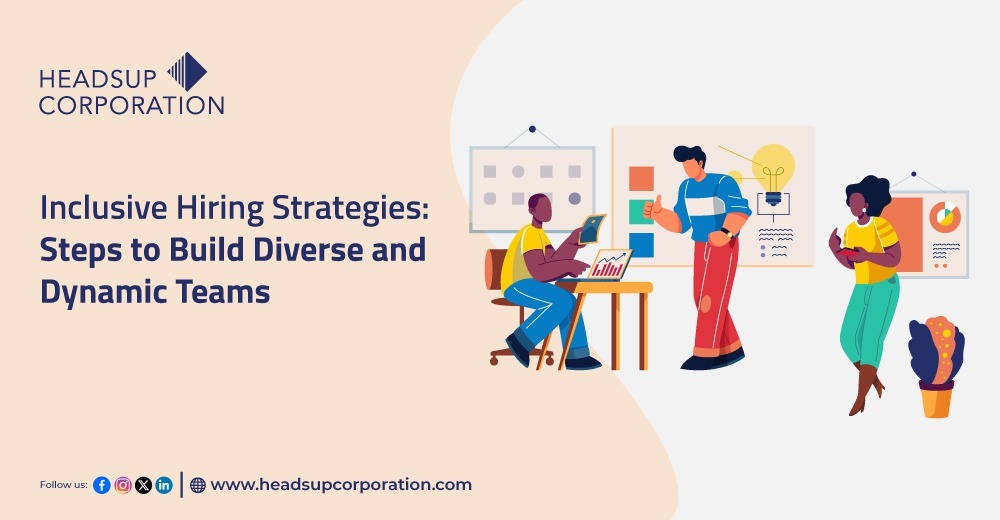
Diversity and Inclusion Topics to Discuss in a Workplace: Understanding Five Dimensions of a D&I Policy
“Diversity requires commitment. Achieving superior performance diversity can produce further action– most notably, a commitment to develop a culture of inclusion. People do not just need to be different, they need to be fully involved and feel their voices are heard.”
–Alain Dehaze (CEO of Adecco)
Generally, when we talk about a workspace, the data usually is quantitative and fact-driven. The performances and overall well-being is measured by fact and figures. But gone are those days. An organisation functions beyond its quantitative limits and focuses on the qualitative, especially “the intangibles” that benefit its name. Having healthy diversity and inclusion topics to discuss in a workplace is one of the many great initiatives falling under this banner. Diversity and inclusion initiatives significantly influence the performance of teams, individuals, and businesses. Yet, many businesses need the right tools, training, and leadership support needed to realise this enormous potential.
In fact, in economic terms, as well the theory of inclusive business growth is the fourth and most important pillar that determines the success of a budding enterprise. It states that growth or progression can only be achieved or measured when it is fairly distributed among all the strata of society and generates job opportunities for all. Isn’t that what we call cultural diversity in a workplace?
Yes, in a global workspace where the talent is multination and brought from several different niches, the benefits of diversity and inclusion at a workplace show chartbuster results. These spaces are productive, futuristic and minting more profit as we speak. And on top of that, they are also a sanctum santorum of justice, equality, diversity and inclusion.
You can also achieve the same heights and be in the major leagues by incorporating varying types of diversity at a workplace. But, before we set sail into this territory, let’s try and understand the different dimensions of diversity and inclusion you must touch upon.
Five Dimensions of Diversity and Inclusion
If you truly intend to embrace the cultural variety of each employee strata, you have to start by giving a fair share to each talent that joins your company. Together, you must work jointly to achieve global inclusion and diversity (I&D) ambitions, which can only be achieved through awareness.
And the first step towards informed strategies for managing diversity in the workplace is to know where you have to pay more attention. Check five of these categories where the unconscious bias works a little too severely, and as a workspace, you must have policies to eradicate those effectively.
1. Gender
We live in a cis-heteropatriarchal society. Ideally, all gendered or non-gendered employees must work in solidarity under your banner. But, the case is seldom this peaceful. There are years of institutionalised biases that are working in the background. With effective diversity and inclusion programs, you can bridge the gap between different genders and establish a holistic status quo.
2. Age
We might neglect this particular bias as a trivial one. Still, on looking closer, the age-based hierarchy, especially in the Indian context, is extremely severe. So, before it becomes a clash of ego showdown, put your best diversity and inclusion activities in play to make people aware and conscious towards inbred ageism.
3. Ethnicities
A workplace doesn’t distinguish between its talent in terms of caste, creed, colour or socio-economic background. Work with your employees to establish the same. Inculcate a work culture which supports all ethnic identities and expressions without offending one another. Along with your models of diversity, equality and inclusion in a workplace, add co-existence to the list as well.
4. LGBTQIA+
Your work should speak for yourself— this should be your mantra for all your hired staff. Make it quite clear that their sexual orientation has little to do with your workplace policies. Each of them is welcome and judged on the basis of the work they do. As for the judgement and stigma associated with queer identities, it is your responsibility as a diverse and inclusive workspace to make them feel welcome, accepted and a part of the team.
5. Disabilities
A disability is just a small hindrance in an employee’s career path. It does not affect their ability to work or accountability. And, with this attitude, you must ensure that such people get the right support and boost. By doing so, you aren’t merely providing people on the spectrum with better job opportunities but also taking a stand as a responsible pillar of society.
In Sum
Diversity and inclusion (D&I) include more than just employee numbers, rules, or programmes. It is a policy, activity, thought process and much more. Impartial employers outperform their rivals by valuing each team member’s specific needs, viewpoints, and capabilities. As a result, people who work in diverse and inclusive environments show more loyalty and trust. All of this not give you the best employee with a great skill set but also a moral framework with a far greater contribution towards society. Isn’t this a win-win for you on all ends?






